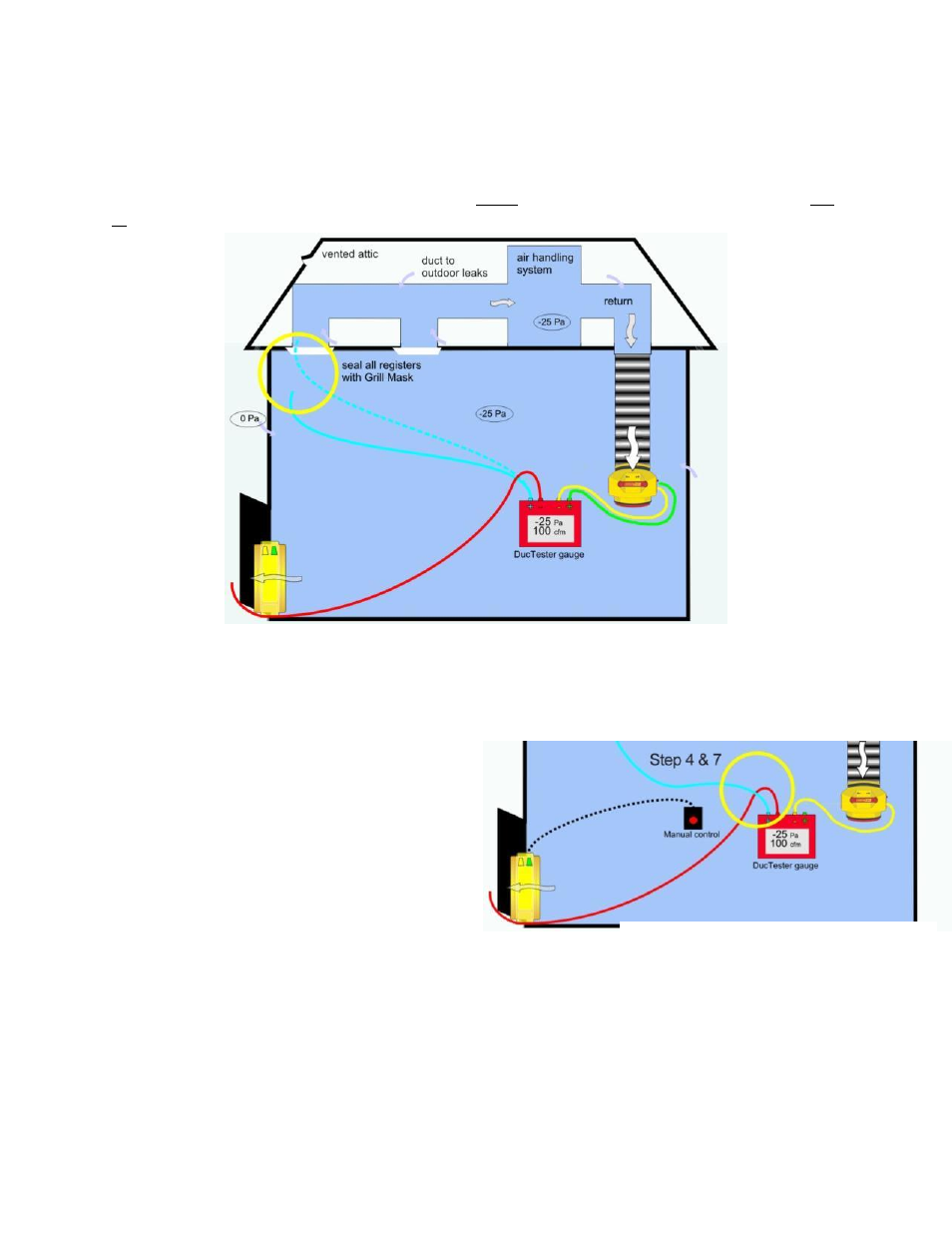Retrotec DucTester 200 Series Residential Applications User Manual
Page 39

Page 39 of 91
©Retrotec Inc. 2015
with respect to the outdoors. The method requires connecting and disconnecting the blue tube,
alternately measuring the house and duct pressure and adjusting the fans separately until the house and
ducts are at the same pressure.
When the house and ducts are at the same pressure, “Flow” on the DucTester gauge displays the result
for Duct Leakage to Outdoors.
For depressurization, set the Blower Door to pull air out of the building and the DucTester to pull air out
of the duct system. If your standard requires 50 Pa, substitute 50 for 25.
Figure 40: 1 Gauge Duct Leakage to Outdoors under depressurization, setting the building pressure
1. Ensure that the Device is DU200 and the correct DucTester Range is selected on the gauge.
2. Close all doors and windows and shut off any exhaust fans in the building.
3. Connect the blue tube from the duct register to the gauge, run the red tube from the gauge to the
outdoors, and run the yellow and green
tubes to the DucTester.
4. Manually adjust the DucTester speed (with
the Speed Control Knob on the DucTester)
to reach -25 Pa in the ducts. Wait 60
seconds.
5. With the DucTester still running,
disconnect the blue tube from the gauge
so the blue port on the gauge is open to
the house.
6. Manually adjust the Blower Door speed
(with the Speed Control Knob on the Blower Door fan) to change
the building pressure until -25 Pa appears on “PrA” of the gauge.
7. With the Blower Door still running, connect the blue tube to the gauge and re-adjust the DucTester
speed to again set the duct pressure to -25 Pa.
8. Record duct leakage, “Flow” on the gauge, when you’re confident the building and duct pressures
have both been stabilized at -25Pa.
Figure 41: 1 Gauge Duct Leakage to Outdoors under
depressurization, setting the duct pressure
